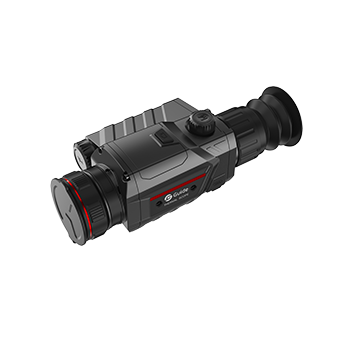
# Thermal Scope Buying Guide: Top Picks and Expert Tips
## Introduction to Thermal Scopes
Thermal scopes have revolutionized night vision technology by detecting heat signatures rather than relying on ambient light. Whether you’re a hunter, law enforcement officer, or outdoor enthusiast, a thermal scope can significantly enhance your ability to see in complete darkness, through smoke, fog, and even light foliage.
## How Thermal Scopes Work
Unlike traditional night vision devices that amplify available light, thermal scopes detect infrared radiation (heat) emitted by objects and living beings. This technology creates a thermal image where warmer objects appear brighter against cooler backgrounds. The key components include:
– Infrared detector
– Lens system
– Image processing electronics
– Display screen
## Key Features to Consider When Buying a Thermal Scope
### Resolution and Detection Range
Higher resolution sensors provide clearer images and better target identification. Detection range varies by model and is affected by factors like:
– Sensor resolution
– Lens quality
– Environmental conditions
– Target size and heat signature
### Refresh Rate
A higher refresh rate (measured in Hz) means smoother images, especially important when tracking moving targets. Most quality thermal scopes offer 30Hz or higher.
### Magnification and Field of View
Consider whether you need:
– Fixed magnification for specific applications
– Variable zoom for versatility
– Wide field of view for close-range scanning
## Top Thermal Scope Picks for 2023
### Best Overall: Pulsar Thermion 2 XP50 Pro
– 640×480 sensor resolution
– 50Hz refresh rate
– 2.5-20x magnification
– Built-in video recording
### Best Budget Option: ATN Thor 4 384
– 384×288 sensor
– 30Hz refresh rate
– 1.25-5x magnification
– Smartphone connectivity
### Best for Long Range: Trijicon IR-HUNTER MK3 60
– 640×480 sensor
– 60mm lens for extended range
– Military-grade construction
– Multiple reticle options
## Expert Tips for Using Thermal Scopes
### Proper Calibration
Always perform a non-uniformity correction (NUC) when:
– Starting your device
– Experiencing significant temperature changes
– Noticing image quality degradation
### Environmental Considerations
Remember that thermal performance can be affected by:
– Heavy rain or snow
– Extreme temperatures
– Thick vegetation
– Reflective surfaces
### Maintenance and Care
To ensure longevity:
– Keep lenses clean with appropriate materials
– Store in temperature-controlled environments when possible
– Use protective covers during transport
– Follow manufacturer guidelines for battery care
## Legal and Ethical Considerations
Before purchasing and using a thermal scope, check:
– Local hunting regulations (some areas restrict thermal use)
– Privacy laws regarding surveillance
– Export controls if traveling internationally
## Conclusion
Investing in a thermal scope requires careful consideration of your specific needs and budget. By understanding the technology, key features, and proper usage techniques, you can select the ideal thermal scope for your applications. Whether for professional use or recreational activities, the right thermal scope can provide a significant advantage in low-light and no-light conditions.
Keyword: Thermal Scopes